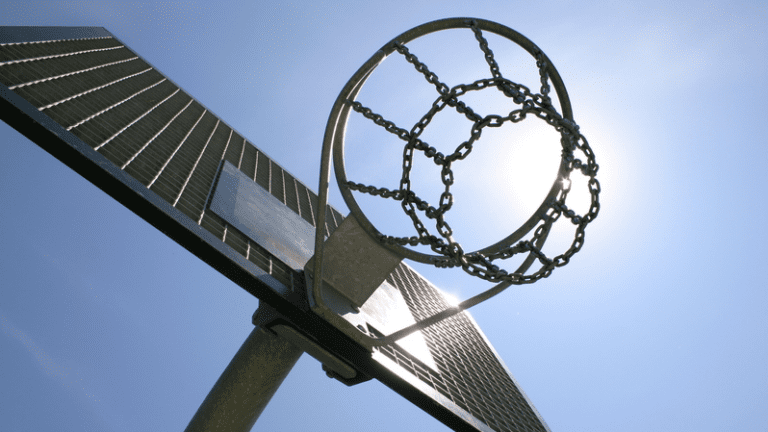Basketball Concepts: Score Early + Often
During my career, I’ve been privileged to coach at least 50+ teams at many levels — from elementary, middle school, freshman, junior varsity, varsity, AAU, summer league teams of kids from different schools, junior college, and Division-I basketball. Similar to every other coach, over the years on the sideline, I developed philosophies ranging from pre-game routines, to academics, to the style of play. Amazingly, I still hold my first basic premise from age 12 of how I believe basketball is best played based on three simple concepts. Through my learnings, I attempt to include these tenants on all my teams, no matter their skill level.
The Team Taking The Most ‘Best’ Shots Wins
There exists a caveat as every coach has a different definition of what constitutes a ‘best’ shot depending on comfort level. Any coach who attempts to institute a philosophy outside their personality is doomed to mediocrity at best. My definition of a good shot is as follows: ideally uncontested as close to the basket as possible depending on time and score of a game and whether a teammate is open for an easier shot. One idea emphasized to players is we would rather throw the ball at the goal than out of bounds, to the opponent, or dribbling off a player’s foot.
Successful creation of open shots means we must advance the ball via the pass as fast as possible to improve chances of finding someone uncontested in a good area to score. Some teams frustrated me by being slow, reversing the ball from side-to-side, and patiently waiting for a perfect shot desired by the coach. Usually, a possession might be more than one or several minutes. We had huge problems with that system, yet, over time, realized an unintended advantage. To win, a meticulous team must avoid any turnovers because it limits the total number of shots taken. In some extreme circumstances, if our opponent made every attempted shot during the game with no turnovers, they still would not have scored enough points to win. I lean liberal on a mythical shot selection continuum.
Of course, the correct kids should be taking a majority of shots and no player may hoist a shot not practiced. A game is not for personal skill experimentation. The term ‘sureness,’ especially when shooting or passing, is a theme we discuss. Even during games where nobody is shooting well, if shots are uncontested and close to the goal — the highest possible odds for success will remain.
A Team In Superior Physical Condition Wins
The danger of this idea is some coaches believe it means being in better condition than one specific opposing team. The ideal circumstance is when your team attains the collective best physical condition without consideration of any opponent. Sprint the court during every offensive possession, advance the ball quickly via passing, and only dribble primarily for ‘rim attacking’. Beginning in middle school, I attended five-star summer basketball camps. Each evening, the famous ‘Station 13’ was following dinner prior to league games. Station 13 was voluntary, but many campers attended because a big name coach was teaching for an hour.
Unusually, one day a young, unknown coach with the name of John Calipari (perhaps you’ve heard of him) was explaining fast break decision-making. His primary rule was refreshingly simple and still a staple for my personal X’s and O’s philosophy. He demonstrated how everyone with the ball has an imaginary direct line to the basket. He believes that the person with the ball should advance forward and if nobody directly steps in the way, then they’ll attack the rim. Should someone obstruct the clear lane to the basket, then the person with the ball jump stops under control and passes to the next open teammate who repeats the process. As Calipari put: “in my lane, out of my lane” —– that was the catchphrase used. It stuck with me and has remained the rule for a fast break system largely used during my entire career.
The most important element for playing fast is ball advancement, starting with an initial outlet pass. If it’s even a half-second too slow, the system stalls. If the outlet is fast and accurate consistently, the system is lethal. The most common mistake made by players is poor speed securing the ball from the net after a made shot, or even a foul shot. A coach could designate one specific player to jump and snatch the ball out of the net, not waiting for it to fall into his hands. Other coaches might train everyone how to throw the outlet because a certain situation may prevent the designated player from being in a position to throw it themselves. A drill for practicing outlet speed is a variation of the famous Mikan Drill. Add a rule for everyone to jump and get the ball out of the net with two hands.
All Fundamentals Must Be Successfully Executed at Game Speed In The Full Court
This idea is most successful with short but intense practices. The first 25 to 30 percent is devoted to dribbling, passing, pivoting, and competitive situations such as 2-on-1, 3-on-2, and 4-on-2. Making contested layups and catching with two hands on a two-foot jump stop; are simple fundamentals needed for any offensive system. We prefer everything practiced in a full court situation, sometimes against more than five defenders. Fundamental work additionally allows for the ability to play half court offense or defend properly for long possessions. The other 75 percent of practice is devoted to sprinting as much as possible, outlet passing off a make or miss, shooting within fast break situations, offensive rebounding, special situations (last second plays, out of bounds, playing overtime, being behind and having to foul), more contested layups, and foul shooting after sprinting every five or so possessions.
My hope for every game is the opponent becomes fatigued, thus slowing down and playing sloppy as this forces me to win but not because of my game management or general coaching strategy. During my high school coaching career, teams were 101-1 when we scored 70 or more points and 120-116 when we did not. I am a type ‘a’ personality, quite aggressive, thus my coaching philosophy is a reflection of it. Anyone can play fast because anyone can perfect simple fundamentals and be in superior physical condition. The entire system relies on attitude and effort, both completely under the control of each player.
In conclusion, my passion other than coaching and teaching is thoroughbred horse racing. A fundamental truth within racing is ‘pace makes the race.’ Forcing an opponent to play at an uncomfortable pace will dramatically enhance chances of winning.
How useful was this post?
Click on a star to rate it!
Average rating 0 / 5. Vote count: 0
No votes so far! Be the first to rate this post.



